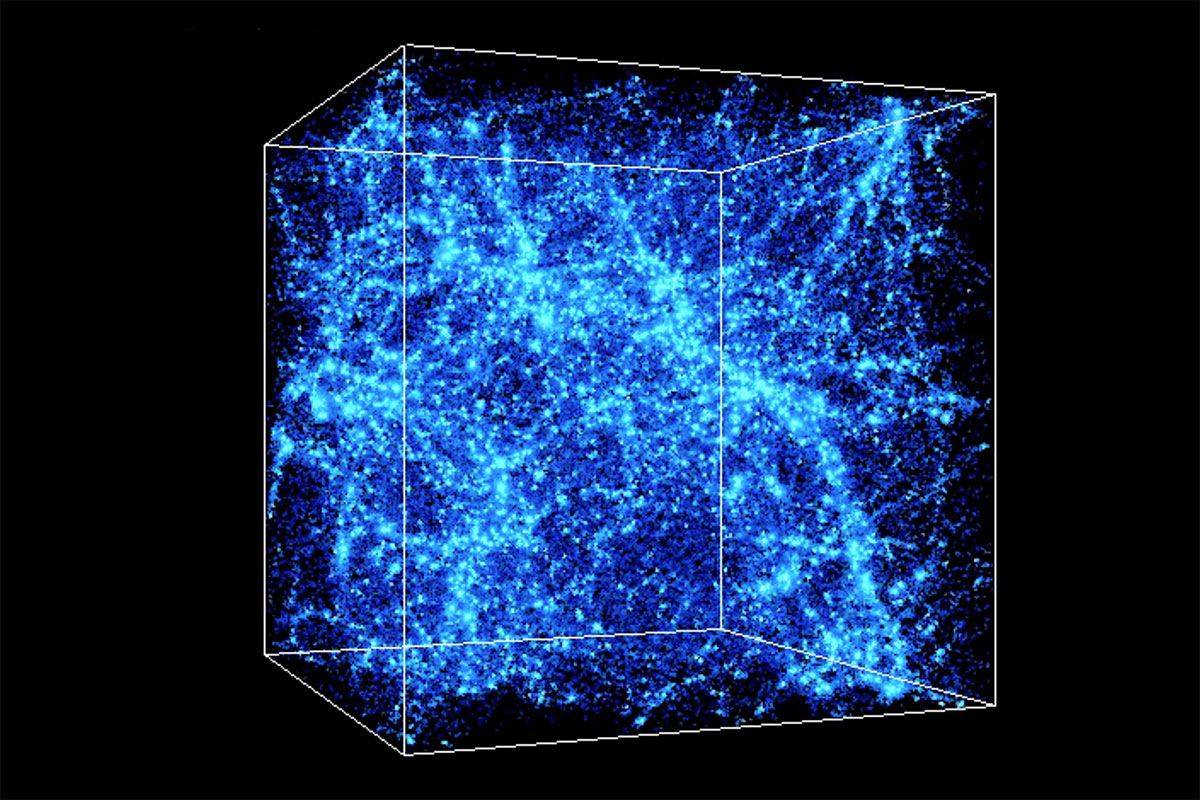
Half the Universe’s Missing Matter Has Just Been Finally Found
by Leah Crane October 9, 2017 (newscientist.com)
• For decades physicists have been searching for “dark matter” to account for half of the matter in space between galaxies that was missing from their calculations.
• Two different teams of scientists have both found this missing matter, and it is contained in the filaments of gasses that link galaxies together.
• The filament strands are so thin that can barely be detected.
• Astrophysicists point to this as proof that their theories on how galaxies are formed are indeed authentic.
• This study supports the “Pan-Magellanic Bridge” of magnetic gas that was found connect our Milky Way galaxy with our nearest neighboring galaxy. (see article: For the First Time, Astronomers Have Found A Giant ‘Magnetic Bridge’ Between Galaxies)
• This is further evidence of the “Cosmic Web”, a natural portal system of interconnected electromagnetic filaments that intelligent beings use to travel between planets, solar systems, and galaxies, which Corey Goode describes in S1E12 of Cosmic Disclosure (GaiaTV).
The missing links between galaxies have finally been found. This is the first detection of the roughly half of the normal matter in our universe – protons, neutrons and electrons – unaccounted for by previous observations of stars, galaxies and other bright objects in space.
You have probably heard about the hunt for dark matter, a mysterious substance thought to permeate the universe, the effects of which we can see through its gravitational pull. But our models of the universe also say there should be about twice as much ordinary matter out there, compared with what we have observed so far.
Two separate teams found the missing matter – made of particles called baryons rather than dark matter – linking galaxies together through filaments of hot, diffuse gas.
“The missing baryon problem is solved,” says Hideki Tanimura at the Institute of Space Astrophysics in Orsay, France, leader of one of the groups. The other team was led by Anna de Graaff at the University of Edinburgh, UK.
Because the gas is so tenuous and not quite hot enough for X-ray telescopes to pick up, nobody had been able to see it before.
“There’s no sweet spot – no sweet instrument that we’ve invented yet that can directly observe this gas,” says Richard Ellis at University College London. “It’s been purely speculation until now.”
So the two groups had to find another way to definitively show that these threads of gas are really there.
Both teams took advantage of a phenomenon called the Sunyaev-Zel’dovich effect that occurs when light left over from the big bang passes through hot gas. As the light travels, some of it scatters off the electrons in the gas, leaving a dim patch in the cosmic microwave background – our snapshot of the remnants from the birth of the cosmos.
Stack ‘em up
In 2015, the Planck satellite created a map of this effect throughout the observable universe. Because the tendrils of gas between galaxies are so diffuse, the dim blotches they cause are far too slight to be seen directly on Planck’s map.
Both teams selected pairs of galaxies from the Sloan Digital Sky Survey that were expected to be connected by a strand of baryons. They stacked the Planck signals for the areas between the galaxies, making the individually faint strands detectable en masse.
Tanimura’s team stacked data on 260,000 pairs of galaxies, and de Graaff’s group used over a million pairs. Both teams found definitive evidence of gas filaments between the galaxies. Tanimura’s group found they were almost three times denser than the mean for normal matter in the universe, and de Graaf’s group found they were six times denser – confirmation that the gas in these areas is dense enough to form filaments.
FAIR USE NOTICE: This page contains copyrighted material the use of which has not been specifically authorized by the copyright owner. ExoNews.org distributes this material for the purpose of news reporting, educational research, comment and criticism, constituting Fair Use under 17 U.S.C § 107. Please contact the Editor at ExoNews with any copyright issue.
Cosmic Web, dark matter, galactic travel, Pan-Megellanic bridge